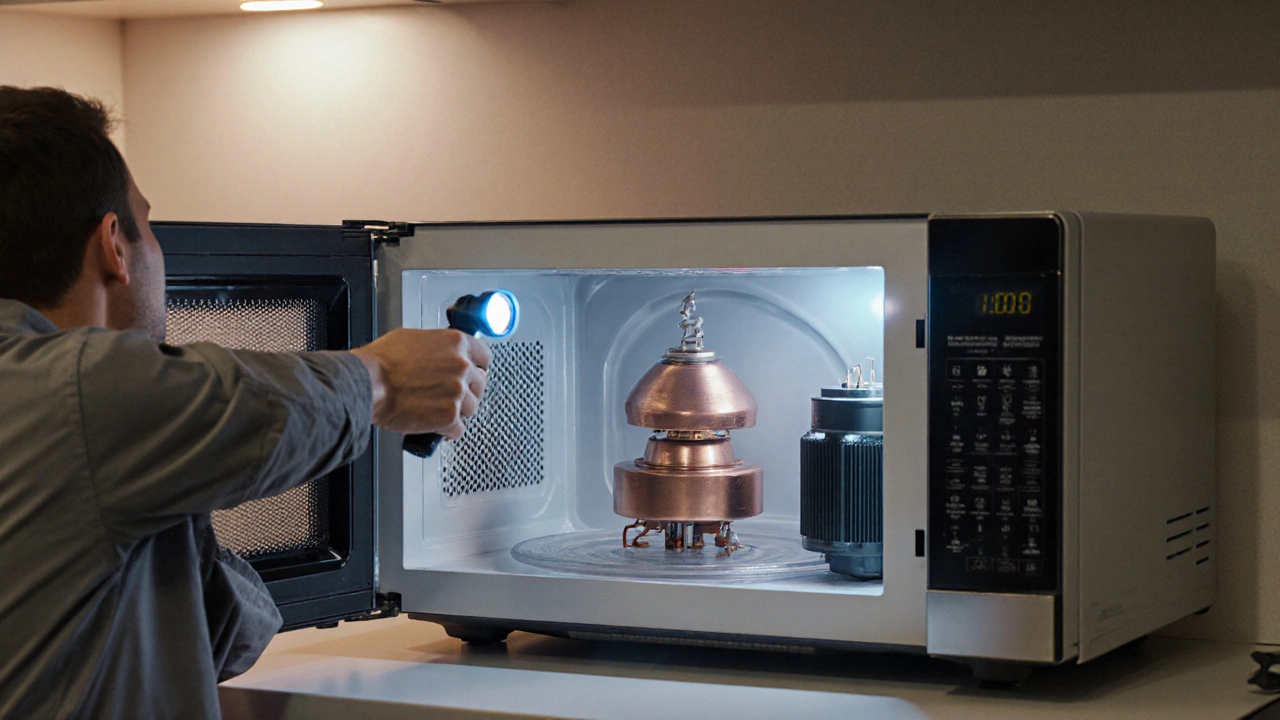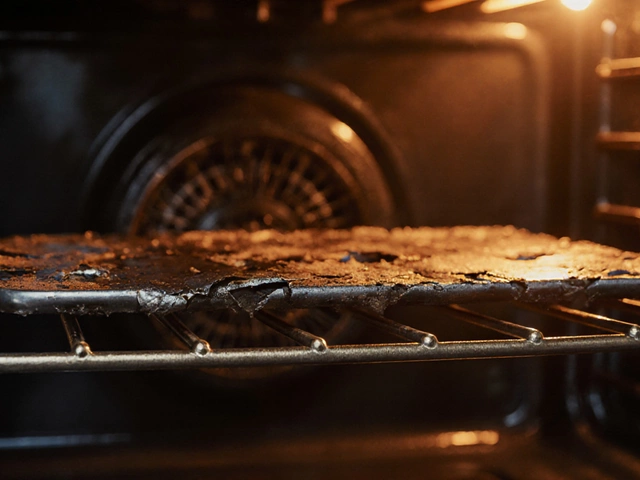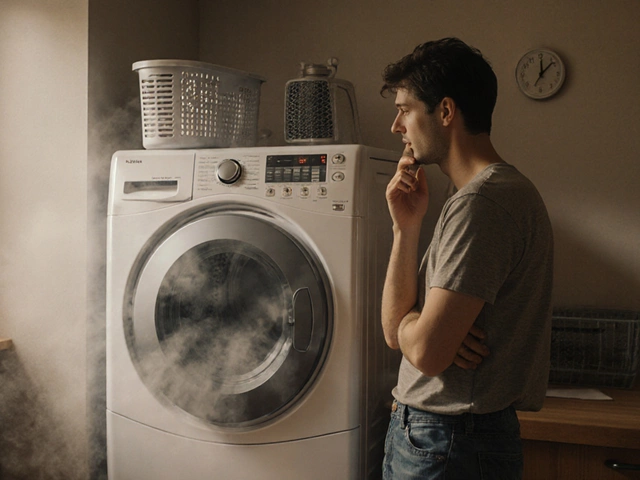Microwave Repair vs. Replacement Cost Calculator
Input Your Details
Results
Enter your details above to see the recommendation.
When your microwave oven is humming oddly, refusing to heat, or making strange noises, the first question that pops into most people’s heads is whether it’s cheaper to fix it or to buy a new one. The answer isn’t one‑size‑fits‑all; it depends on the failure type, the age of the unit, how much you’ll pay to repair it, and how long you plan to keep it. Below you’ll find a step‑by‑step way to weigh the numbers, avoid common pitfalls, and decide if microwave repair makes sense for your household.
Key Takeaways
- Most repairs cost between NZ$80 and NZ$250; replace only when repair exceeds 50% of a new unit’s price.
- Failed magnetron or high‑voltage capacitor usually signal replacement, especially after 8‑10 years of use.
- Energy‑efficient models (Star rating 5) can save up to NZ$30 a year, offsetting a higher upfront price.
- A valid warranty or extended service plan may cover most repair costs.
- Choose a reputable appliance repair service that offers a written estimate before starting work.
Common Microwave Failures
Understanding what went wrong helps you estimate the bill before the technician lifts the back panel. The most frequent culprits are:
- Magnetron - the component that actually creates microwave energy. It can burn out, especially in units older than eight years.
- High voltage capacitor - stores the charge needed to power the magnetron. A leaking or bulging capacitor often causes the microwave to stop heating altogether.
- Turntable motor - a simple motor that drives the rotating plate. When it sputters or stops, food may cook unevenly.
- Door latch or interlock switch - safety switches that stop the oven if the door isn’t sealed properly. A faulty latch can trigger error codes.
- Control board - the micro‑processor that manages power levels and timers. Modern units with digital displays are prone to board failures.
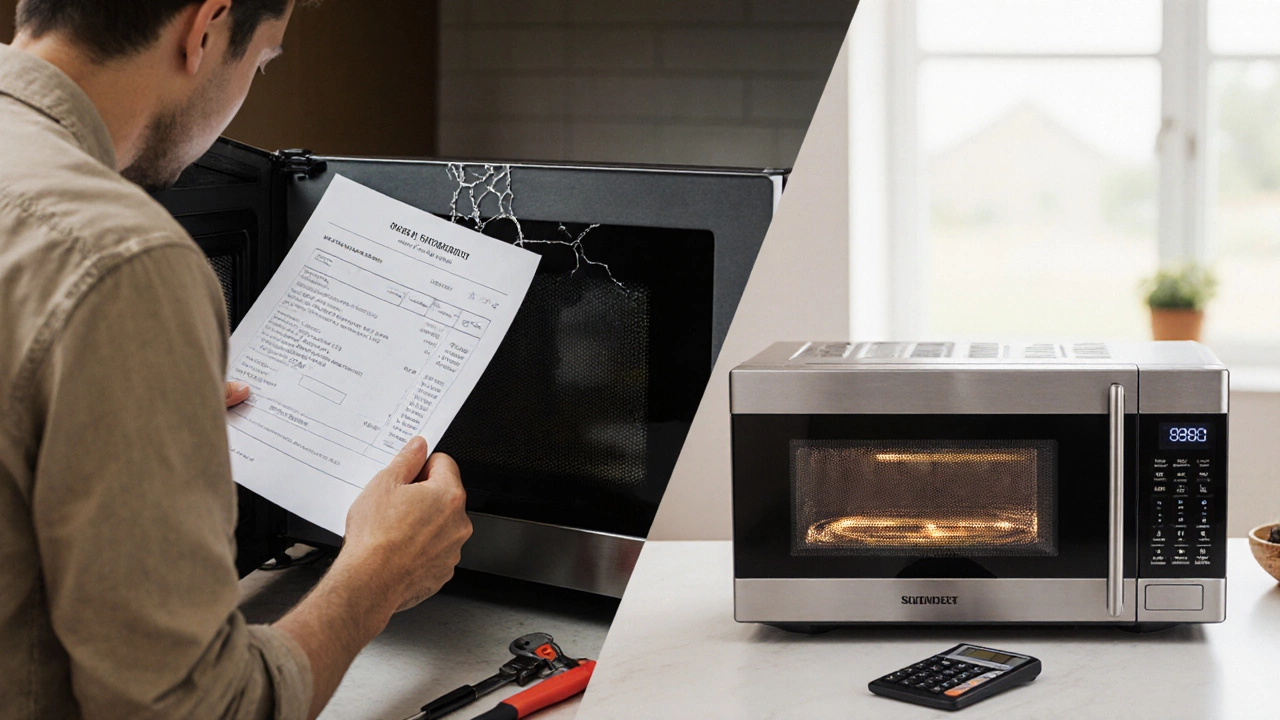
How to Estimate Repair Cost
- Identify the symptom (no heat, strange noise, error code).
- Check the age of the appliance. Most microwaves have a 7‑year average lifespan.
- Search online for the typical price of the failing part. For example, a magnetron runs NZ$80‑NZ$130, while a capacitor is NZ$30‑NZ$60.
- Ask a local appliance repair service for a labour rate (usually NZ$70‑NZ$120 per hour) and request a written estimate.
- Add a small contingency (10‑15%) for unexpected parts or diagnostics fees.
Sample calculation: a broken magnetron (NZ$110) + two hours labour (NZ$180) + 10% contingency (NZ$29) = NZ$319 total.
When Replacement Beats Repair
As a rule of thumb, if the repair cost exceeds half the price of a comparable new model, replacement is the smarter move. Below is a quick reference table for typical New Zealand prices in 2025.
| Appliance Age | Average Replacement Cost (NZ$) | Repair Cost Threshold (50%) | Suggested Action |
|---|---|---|---|
| 1‑3 years | 200 - 300 | 100 - 150 | Repair if issue is minor (motor, latch) |
| 4‑6 years | 250 - 350 | 125 - 175 | Repair only for inexpensive parts |
| 7‑10 years | 300 - 450 | 150 - 225 | Lean toward replacement unless under warranty |
| 10+ years | 350 - 550 | 175 - 275 | Replace; older units are less energy‑efficient |
Energy & Safety Considerations
Older microwaves often consume more power per use. A 700‑watt model from 2008 may draw NZ$0.30 per 10‑minute session, while a modern 5‑star rated unit uses about NZ$0.22 for the same task. Over a year, that difference adds up to roughly NZ$30 in electricity savings.
Safety is another factor. A failing high‑voltage capacitor can retain a charge long after the machine is unplugged, posing a shock risk. Professional technicians are trained to discharge these components safely. Attempting DIY fixes without proper tools can lead to burns or fire.
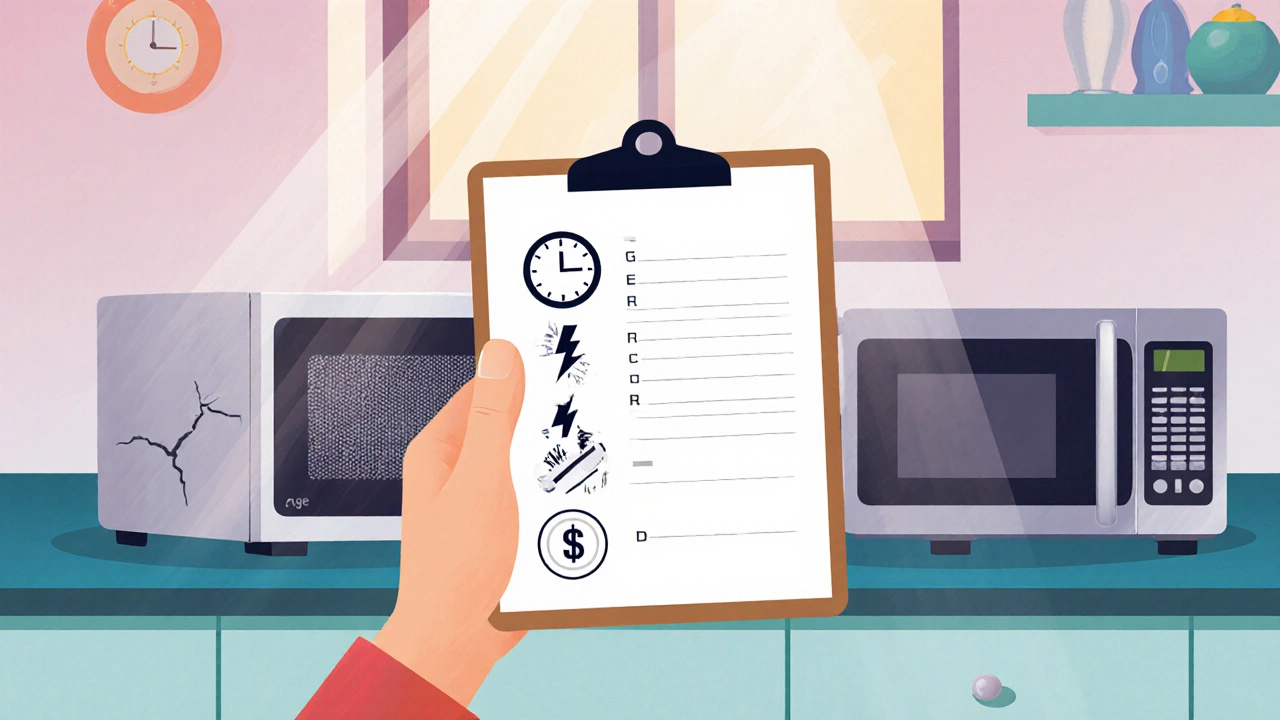
Finding a Reliable Appliance Repair Service
Not all repair shops are created equal. Here’s how to shortlist a trustworthy provider:
- Look for a business that lists a physical address and a NZ$‑registered phone number; mobile‑only services often lack proper insurance.
- Check online reviews on Google or local forums; a consistent 4‑star rating or higher is a good sign.
- Ask if they offer a written estimate and a warranty on parts and labour (typically 30 days).
- Confirm they have experience with the specific component you need (e.g., magnetron replacement).
- Prefer shops that are members of the New Zealand Appliance Repair Association - it shows they follow industry standards.
Decision Checklist
- Age of microwave≥8years?
- Repair quote>50% of new unit price?
- Failed part is a magnetron or high‑voltage capacitor?
- Unit’s energy‑star rating is low (1‑2 stars)?
- Warranty or service plan still active?
If you answered “yes” to two or more questions, replacement is probably the smarter choice. Otherwise, go ahead with the repair - you’ll likely extend the life of a perfectly good appliance and avoid the waste of discarding it.
Frequently Asked Questions
How long does a typical microwave repair take?
For common issues like a broken door latch or a faulty turntable motor, a technician can usually finish the job within 45minutes to an hour. Replacing a magnetron or high‑voltage capacitor often requires 1.5 to 2hours because of safety checks and part testing.
Can I repair a microwave myself?
DIY fixes are only safe for simple problems such as cleaning the door seal or replacing the turntable. Anything involving the magnetron, capacitor, or control board should be left to a qualified appliance repair service. The high‑voltage components can store dangerous charge even after unplugging.
What is the average lifespan of a microwave in New Zealand?
Most microwaves last between 7 and 10years, depending on usage frequency and maintenance. Units kept clean and used for short bursts tend to outlive those that run heavy, daily cooking tasks.
Does a warranty cover the magnetron?
Standard manufacturer warranties (usually 1year) cover parts and labour, including the magnetron. Extended warranties often add coverage for up to three years, but always read the fine print to confirm that the magnetron isn’t listed as an excluded component.
How much energy can I save by upgrading to a newer microwave?
Upgrading from a low‑efficiency 700‑watt model to a modern 5‑star rated 1200‑watt unit can cut electricity use by roughly 20‑30% per cooking session. Over a typical family’s annual usage, that translates to NZ$20-NZ$40 in savings.
